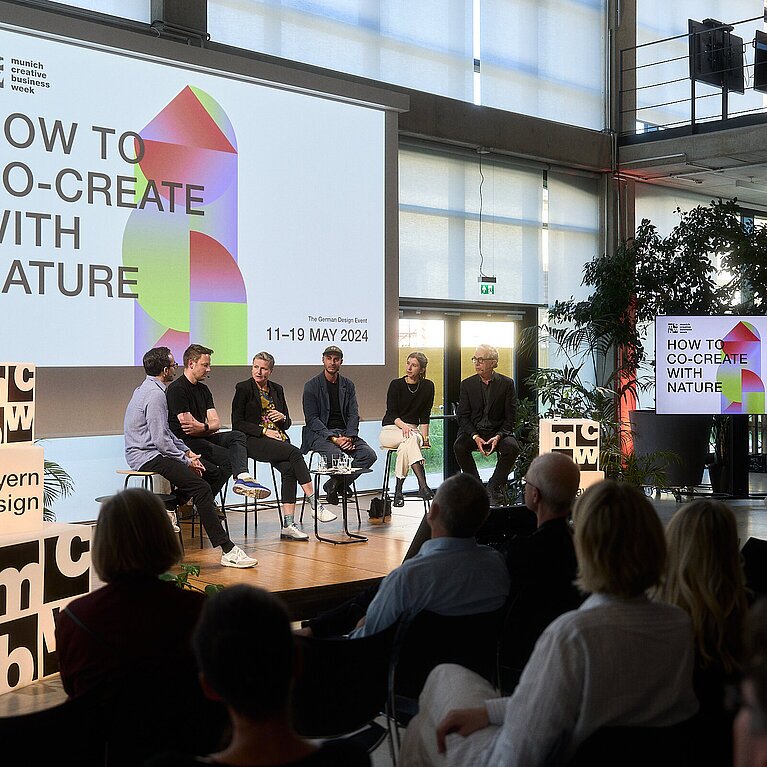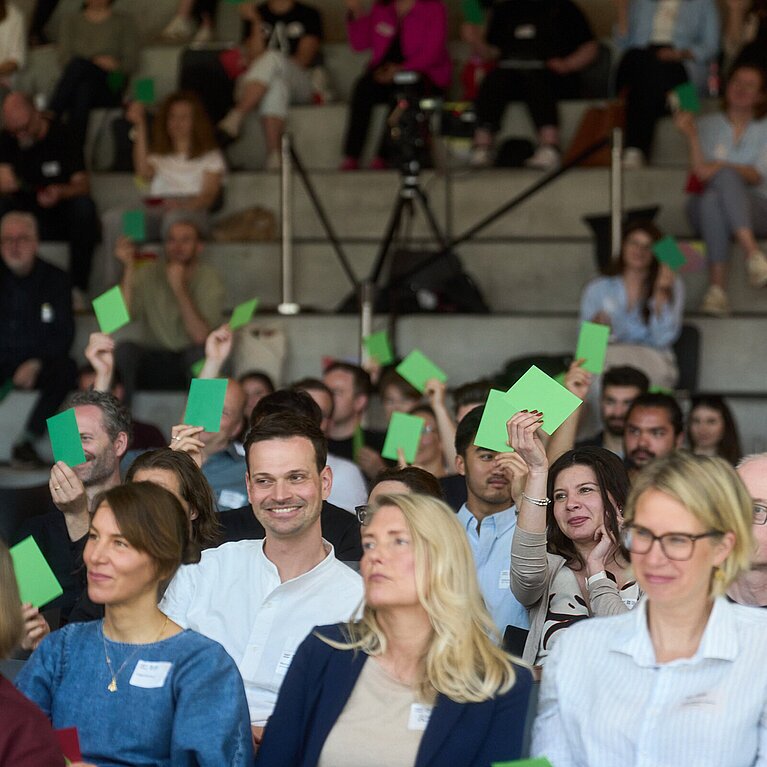
DESIGN SUMMIT 2024
The heart of mcbw: Under this year's annual theme "How to co-create with nature", the mcbw design summit took place on May 13, 2024 with creative explorer Stefano Boeri and many other speakers.

Seven take-home messages regarding successful co-creation – The lectures of the keynote speakers, discussions among our colleagues at design centers across Europe, and the mcbw advisory panel all addressed similar issues – approaches necessary for co-creation to succeed.
Humans are part of nature. We are not rivals in nature but rather a part of it. Once we accept our roles as “teammates” and hold ourselves accountable, everybody will benefit.
Design must awaken a desire for sustainability. Sustainability is a complex issue and must be communicated well to all segments of society. The best way to achieve this is to communicate the topic in an attractive and desirable way.
No setting of mental boundaries. We need new processes, innovative materials, and an interdisciplinary mindset. Nature has created many of the most efficient solutions already; our task now is to work together to learn to understand them.
Sustainability must not be exclusionary. Sustainability should not be a question of deep pockets; it must be affordable for all. Solutions must not benefit cities only; they also must work for rural areas.
Let’s work on scalability. Innovations created at research labs give cause for hope. However, to meet the demand of the masses we must focus on expanding them to an industrial scale.
The best type of sustainability is longevity. Patina and the second-hand market must be given new value through requirements defined by politicians or through enhanced aesthetics.
Let’s rethink behavioral patterns. We must challenge the most common patterns of our consumer society and adjust our understanding of design accordingly, in both academia and the corporate world.

What does that mean in concrete terms?
There is no question about it, we are facing great challenges, and the above steps take time. However, the spirits at design summit were optimistic and discussions constructive. Promising approaches and recent developments give rise to hope and outline what is possible today.
The Pinecone Principle, or learning from nature
Lower energy costs in the construction sector and reduce transportation costs at the same time? This has been promised by Laura Kiesewetter and her team at Stuttgart University with their nature-based principle for the production of furniture and buildings. Instead of energy-consuming processes, the experts rely on the characteristics of wood and make use of natural humidity to shape their objects. In Wangen im Allgäu, Germany, the team has erected a 22-meter-high observation tower with their technique, proving the capability of these self-forming processes.
Using methods of speculative design, Daniela Bohlinger (BMW Group) has pioneered into uncharted territory and played out potential future scenarios in which mobility and sustainability go hand in hand without harming each other. We are best at designing our future if we don’t lose sight of our biggest goals.
Maurizio Montalti reported on his work on mycelium, a fungus structure that already has been used to produce textiles and pieces of interior design – 100% organic and sustainable and, most importantly, scalable to industrial dimensions.
How can we give nature a say? Tom Kortbeek introduced an app that helps visualize processes in plants thus offering new opportunities to make us understand nature. The project is based on his conviction that we will handle nature better if we understand more about it.
Green Obsessions – committed to nature
Italian-born architect Stefano Boeri was the Creative Explorer of mcbw 2024. A few years ago, Boeri’s Vertical Forest attracted a lot of attention: An entire forest grows from the faVades of the two residential high-rises built in Milan, Italy, home to 800 plants, 100 species, and a vast population of birds and insects. Boeri currently is constructing 40 vertical forests including in Switzerland, China, and Mexico, proving what is possible when you are obsessed with all things green and are courageous enough to think outside the box. His green houses that ensure healthy habitats for people, flora, and fauna are the result of interdisciplinary cooperation. Boeri and his team have created new niches for all and have demonstrated yet again that progress and nature do not contradict each other and can best exist alongside each other when they are thought about together. Watch Stefano Boeri's talk below.

Our take-aways from 2024 mcbw summit
Several excellent approaches and projects show us how to come closer to co-creating with nature. It is important to keep the ball rolling and not lose faith even when processes are lengthy – there is always grounds for hope. Päivi Tahkokallio from Finland, former president of the Bureau of European Design Associations (BEDA), recommended spending more time in nature because it takes practical experience to make us realize the efficiency of nature and its role as the co-creator that reaches out to humans.
Our special thanks for helping shape this fantastic event go to the members of the mcbw advisory panel Markus Frenzl, Holger Hampf, Boris Kochan, Angelika Nollert, and Dewi Schönbeck; to our colleagues at design centers across Europe including Päivi Tahkokallio, Christina Melander, Tiia Vihand, and Vincent van Herk; to Leonhard Nima for his outstanding moderation of the event; and to our wonderful audience.
Reading recommendation:
